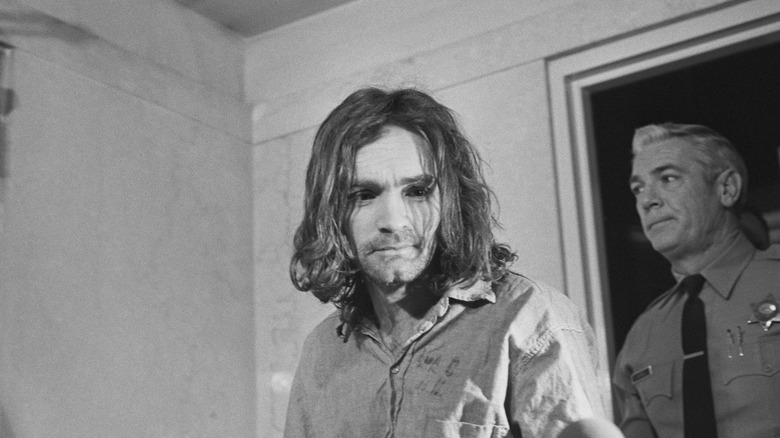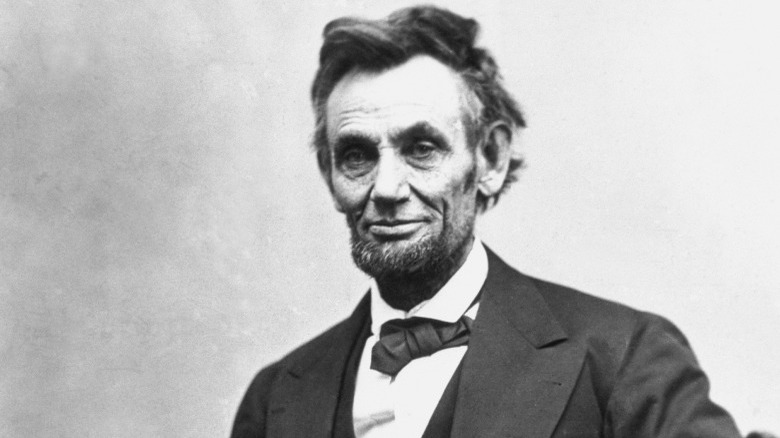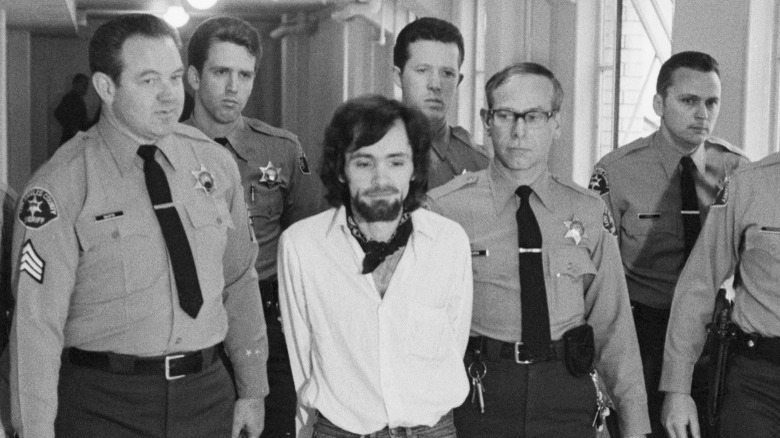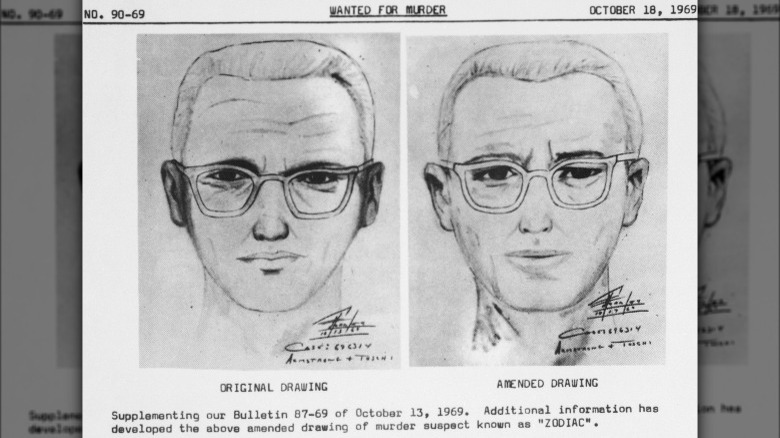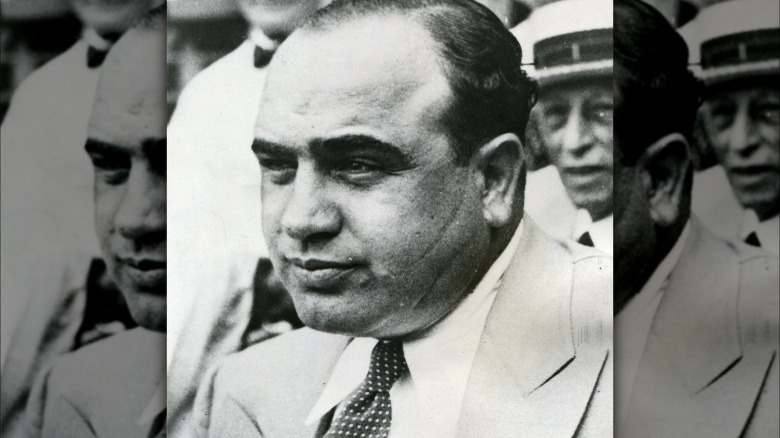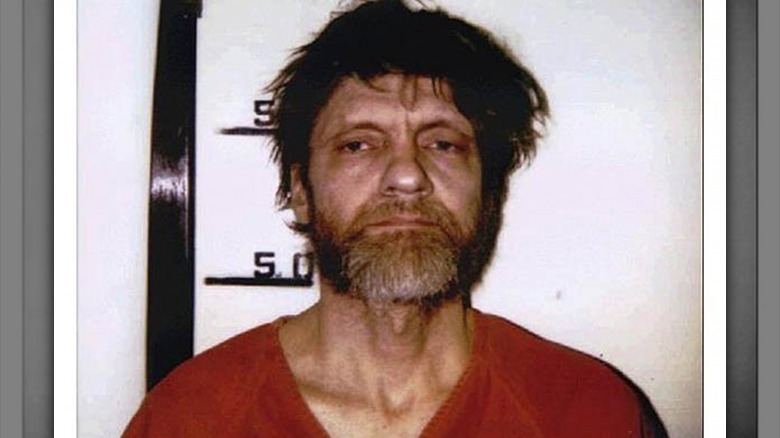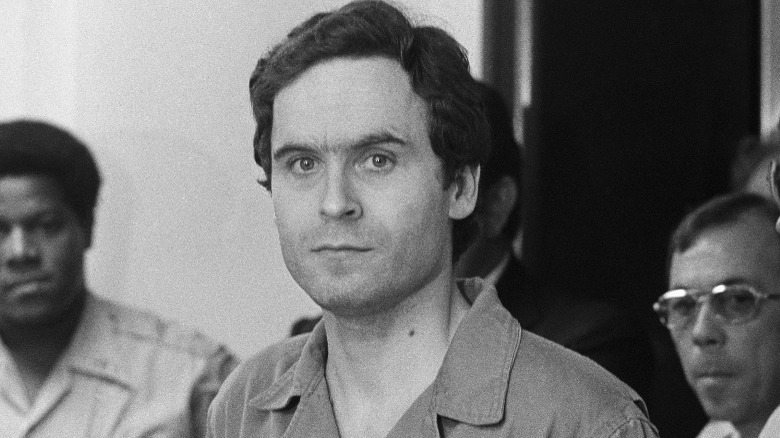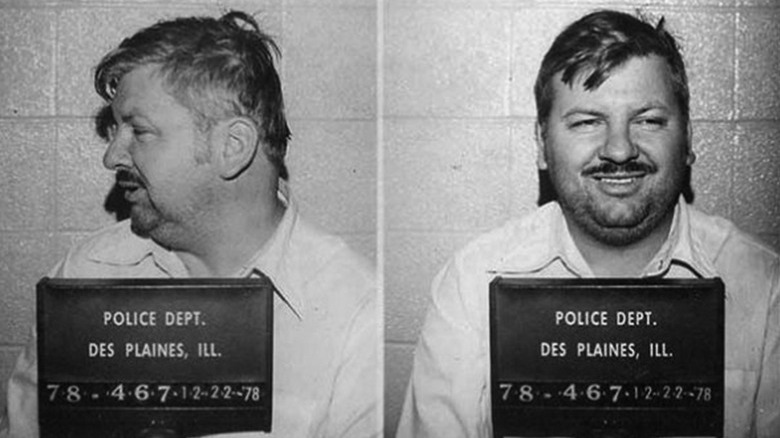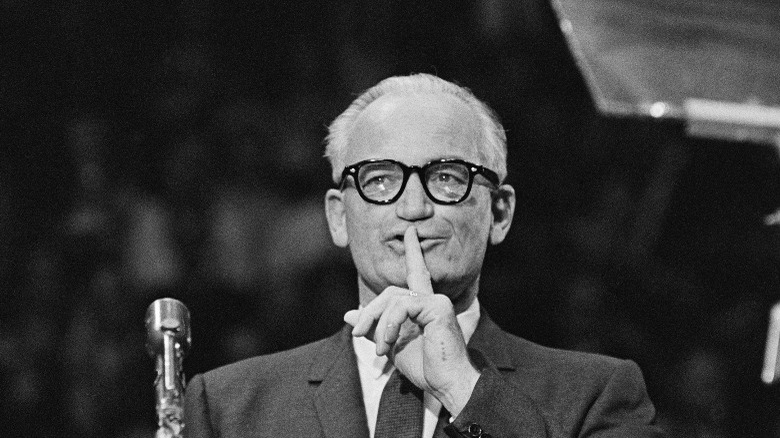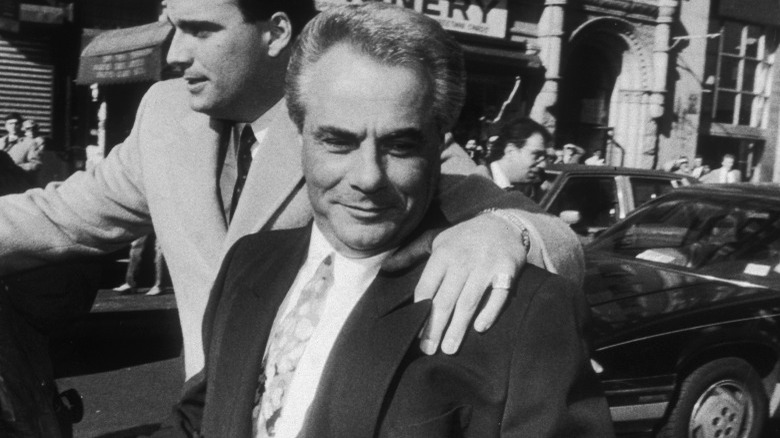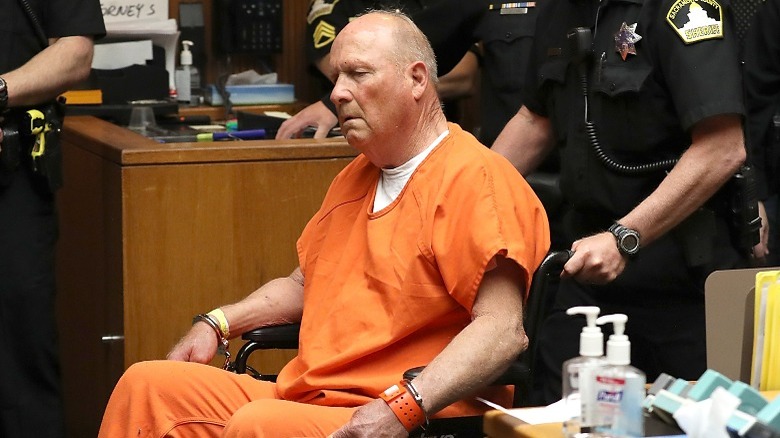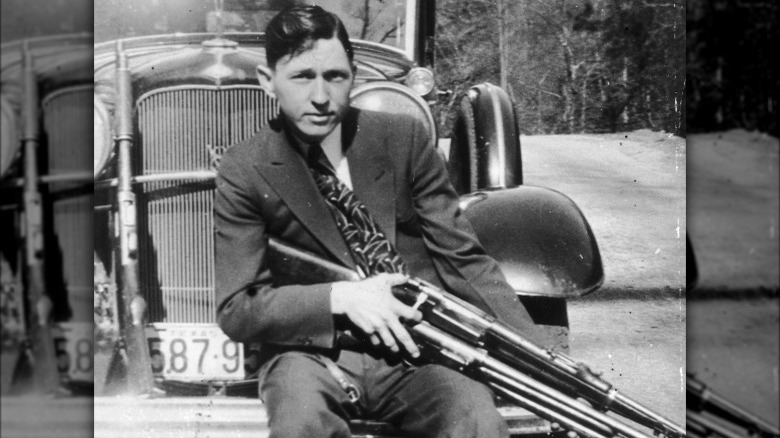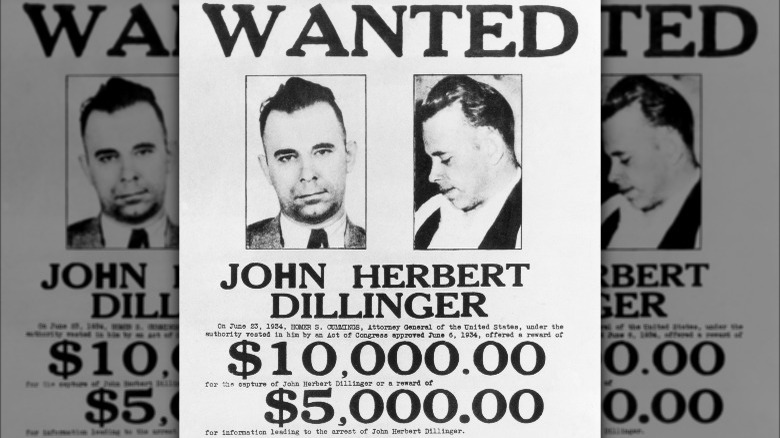The Most Feared Men In The U.S.
No one wants to live in fear. Being able to go outside and live your life to the fullest is one of the most important aspects of being an American, and it's a right countless numbers of people have died to defend. Unfortunately, sometimes the biggest threats are just outside our doorstep, lurking in the minds of depraved and nefarious individuals. For decades, communities throughout the country have had to fear uncaught serial killers and criminals, some of whom stay prominent due to extensive media coverage.
Additionally, some men have been feared for their political views and aspirations, with their critics arguing that their successful election will only bring massive amounts of chaos and sew untold destruction. And of course during prohibition — and for years after — notorious gangsters littered the streets of Chicago and New York with the bodies of slain citizens, scaring families and putting neighborhoods and businesses on edge.
Today, everywhere you look there is something to fear or be worried about, and it seems like every day the list only gets bigger and bigger. Looking back, there are quite a few Americans you can add to that list of frightful things. The most feared women in the U.S. are another story altogether; here it's time to look at America's most feared men.
The following article includes allegations of sexual assault. If you or anyone you know has been a victim of sexual assault, help is available. Visit the Rape, Abuse & Incest National Network website or contact RAINN's National Helpline at 1-800-656-HOPE (4673).
Abraham Lincoln
Among former American presidents, Abraham Lincoln consistently stands out as one of the most revered and respected. We look at him now as playing a pivotal role in the abolition of enslavement, and his untimely death sealed his legacy as one of America's most famous leaders. His Gettysburg Address, given on the site of one of the bloodiest battles in American history, is still considered a standard by many for public oration. Without Lincoln, the America of today would not exist, and would likely be radically different.
However, it's hard to underestimate just how much a huge portion of the country feared Lincoln upon his nomination and election to the presidency. When Lincoln won the presidency in 1860, Southerners and northern Democrats who supported the institution of enslavement were incredibly scared of him, and the changes he was going to make. They were so worried about him abolishing enslavement that, before he was even inaugurated, seven states decided to secede from America.
Never before had citizens been so distrustful of a president that they actually left the Union. In all, 11 states formed the Confederacy and fought against Lincoln in one of the bloodiest wars in American history. Today, Lincoln is one of the most beloved presidents of all, but at one time and among a large swath of the population, he was also the most feared.
Charlie Manson
Even today, for those who can remember him, Charlie Manson is still a haunting individual. Many see him as the personification of evil in America, and his legacy is that of bloodshed and terror. Manson is infamous for his role in the Tate and LaBianca murders that occurred in California in the late-1960s. Followers of Manson, who called themselves the Manson "Family," carried out the murders, which shocked and unnerved Los Angeles.
While Manson was not one of the people who participated in the killings, he was still convicted and imprisoned for his role. Manson was the impetus behind the murders, and he had slowly been manipulating members of the group for several years to get them to do his bidding. After his conviction in 1971, in one of the most infamous and nationally followed trials in U.S. history, Manson spent more than 45 years in California prison, finally dying in 2017.
During his trial, he acted increasingly bizarre and violent, and he later carved a swastika into his forehead. The court originally sentenced him to death, but that was later changed to life in prison. Even though he was in prison for most of his adult life, Manson's name and likeness still spread fear wherever it appeared. His public interviews were combative at times, and he refused to express remorse over the killings. Even today, the Manson name is still synonymous with fear.
The Zodiac Killer
Among infamous American serial killers, the Zodiac Killer stands out as a particularly frightening case. As of 2023, his identity has never been discovered, and no one knows if it was a single person acting alone, several independent people, a group, or something even more sinister. The Zodiac Killer first came to attention in 1969, following a double homicide the year prior. Though they did not identify themselves, the killer made a habit of communicating with authorities and newspapers after carrying out their gruesome murders.
Understandably, people in the Bay Area were on edge about the potential to become another Zodiac victim. The authorities' inability to capture the killer or stop his killings was not reassuring, and their taunts in the form of ciphers were chilling to read and hear about. It's unknown how many killings the Zodiac Killer is responsible for, or if a single individual was even responsible for them all, and so anywhere from five to more than a dozen murders are linked to them.
Several potential suspects have been floated as possible Zodiacs, but no one has ever been convicted for any of the killings associated with his legend. Maybe the Zodiac Killer still lurks out there today, and his likeness is certainly still terrifying.
Al Capone
Long known as one of America's most infamous outlaws, for many years Al Capone was one of the more feared men in the country. Capone first came to prominence in Chicago in the 1920s, when he became a significant player in the city's illegal alcohol distribution business during prohibition. Within a few years, Capone was Chicago's top gangster, and his ruthless reputation preceded him wherever he went. In 1929, it's thought that he ordered the murder of rival gangsters in the notorious "St. Valentine's Day Massacre." The killings shocked the city with their brutality, and almost immediately, Chicago police were pointing fingers at Capone.
Capone's crew, who were known as the "Outfit," terrorized the streets of Chicago, spraying automatic weapons at rivals and distributing illegal liquor throughout the city. What's more, Capone seemed invincible, as he was able to escape criminal responsibility for things like murder and violating prohibition, and was only jailed for short periods of time, even when he was arrested with weapons.
However, the other shoe finally dropped in 1931, when the federal government convicted Capone of tax evasion. He eventually served time at the infamous Alcatraz prison in California, but mental health issues began to take their toll. He died in 1947, a hollow shell of the fire-breathing gangster he once was. Even today, the Capone name is used to instill images of fear and violence, and they will likely stay synonymous for a long time.
The Unabomber
For many people, just the name Ted Kaczynski is enough to send a shiver down their spine. A Chicago native, Kaczynski is a graduate of both Harvard and the University of Michigan. Just over a decade after completing his Ph.D. at Michigan, Kaczynski started terrorizing the country. He sent bombs in the mail to various targets, which would explode once they tried to open them. His targets were seemingly random, and included academics and business executives, as well as several colleges in Chicago and California. People everywhere lived in fear of opening a mailbomb.
From 1978–1995, Kaczynski killed three people and injured 23 through his attacks. For years, the authorities could not track down or find out who was responsible for the bombings, leaving Kaczynski at large and able to continue his actions. The first death attributed to Kaczynski occurred in 1985, and he continued to bomb for another 10 years. Eventually, he acquired the sobriquet of the "Unabomber," which was based on the FBI's name for their investigation.
In 1995, several media outlets published Kaczynski's manifesto "Industrial Society and Its Future," after authorities thought doing so could help the investigation. It worked, and it was his brother David Kaczynski who helped authorities discover the identity of the Unabomber. Authorities arrested Kaczynski, and he was sentenced to several life sentences after pleading guilty to multiple charges. His crimes still loom large in the minds of many, but at least he can't bomb anyone ever again.
Ted Bundy
In the 1970s, for residents throughout the United States, the threat of falling victim to serial killer Ted Bundy felt very real. From 1974–1978, Bundy left a trail of more than two dozen victims across Washington, Utah, Colorado, and Florida, all of them women. Bundy would often strangle them or beat them to death, and he also sexually abused many of them, including some postmortem. He lured his victims to his Volkswagen Beetle under the guise of being an authority figure or needing help, but would kidnap and kill them instead.
The police first caught Bundy in Utah in 1975, a year after he had started killing, and following months of people pointing fingers at him over the bodies. However, he managed to escape custody twice and fled to Florida. The news of Bundy and his crimes attracted massive media attention, enthralling some but scaring many more. Once in Florida, he committed even more instances of rape and murder, terrifying communities and putting college students on edge in the areas he attacked.
After being arrested again, Bundy was eventually sentenced to death in 1979 for murder. The government executed Bundy a decade later, in 1989, following another death sentence.
John Wayne Gacy
Known infamously as the "Killer Clown," John Wayne Gacy was one of the most notorious serial killers in American history. Gacy operated in the Chicago area during the 1960s–1970s, killing more than 30 victims. He got the sobriquet of "Killer Clown" due to his habit of dressing up like Pogo the Clown and entertaining kids in his neighborhood. Police in Chicago first started investigating Gacy in 1975, but it was not until Christmas of 1978 that they were able to actually get him off the streets for good.
Previously, Gacy had been convicted on sodomy charges against a teenager, and he served time in prison in the '60s. Not only did he murder his victims, but he also sexually assaulted many of them, too. The public became aware of the investigations surrounding Gacy, and his reputation got so bad he even tried to sue the police. Yet, within a week of his lawsuit, police found bodies buried in his house, leading to his full confession.
The heinous details of his exploits horrified the public, and by April 1979 he was facing 33 murder charges. The government executed Gacy on May 10, 1994, finally bringing an end to one of the most frightening and dreadful killers in American history.
Barry Goldwater
1964 was a very pivotal year in American history. President John F. Kennedy had just been assassinated the previous November, the Civil Rights Movement and racial tensions were threatening to tear the country apart, and the American commitment in Vietnam was slowly but surely growing. On top of all that, it was an election year, and President Lyndon B. Johnson was running against firebrand conservative Senator Barry Goldwater.
Goldwater had been a Senator since the early-'50s, and easily won the nomination as the Republican nominee for the 1964 elections. However, while his conservative and bombastic rhetoric may have helped him to win his senate seat in Republican Arizona, it played very differently with the majority of the nation. Johnson and the Democrats successfully painted Goldwater as reckless and extremist, and the senator didn't exactly make it tough on them. His casual rhetoric about using nuclear weapons in Vietnam, his refusal to vote for the 1964 Civil Rights Act, and questionable comments about the east coast and Social Security, seemed to only confirm what the Democrats were saying.
What may have been most damaging was the famous "Daisy Girl" commercial, which equated a Goldwater presidency with nuclear devastation. On election day, Johnson absolutely trounced Goldwater, carrying more than 90% of the electoral college with a margin of nearly 16 million more votes. The nation was terrified of what a Goldwater presidency would mean for the citizens at home and those abroad, and they overwhelmingly said not to him as commander in chief.
John Gotti
While they are often idealized and romanticized in Hollywood movies like "Goodfellas," "The Godfather" trilogy, and "Casino," mob gangsters are some of the most feared men in American history. One of the most infamous of them all was John Gotti, though he was often known by various nicknames like the "Dapper Don" or the "Teflon Don." A native of the Bronx, Gotti rose to the head of the Gambino Crime family in 1985, and began a ruthless tenure.
Gotti, in contrast with most gangsters, was also a public figure and was featured often in the newspapers — which he would sometimes pose for. This only added to the Gotti legend, as he seemed virtually untouchable by law enforcement. He was arrested and charged with crimes several times, but usually got away through bribery and intimidation. Anyone considering testifying or informing against Gotti had to think twice, as he was widely feared as one of the most powerful illicit characters in the country.
Eventually, things caught up with Gotti, and he ended up getting a life sentence in the early-'90s for various crimes, including murder. Gotti died while in prison in 2002, but his name still lives on in infamy today. Gotti represented all that was frightening about the mafia until he was finally caught, and just his name was enough to strike fear into the minds of many.
The Golden State Killer
Of all the things California had to worry about in the 1970s–1980s, the mystery of the Golden State Killer may have been the most haunting and chilling of all. For many years his identity was a mystery, and it was not until 2018 that advances in criminology technology led to the capture of Joseph DeAngelo. A former police officer, DeAngelo started his spate of killings and sexual assaults in 1975.
For years, he terrorized the Bay Area, killing and sexually abusing both individuals and couples. He is thought to have been active from 1975–1981, and again in 1986, for the rape and murder of another 18-year-old woman. The police were unable to track him or convict anyone of the murders for decades, leaving many in the Bay Area fearful of becoming another victim. The case made national headlines, and the fact that no one could identify DeAngelo only made him more terrifying.
In 2018, after decades of no activity, the police arrested DeAngelo and charged him with more than a dozen counts of first-degree murder. He was convicted and sentenced to life in prison, but the fear he brought will never be forgotten.
Clyde Barrow
The tale of Bonnie and Clyde is one of the most notorious in American history. And while they may be romanticized today as anti-heroes, during their crime spree, they were among the most feared outlaws in the country. Born Clyde Chestnut Barrow in Telico, Texas, Barrow first met Bonnie Parker in 1930, having already been to prison. The two started a relationship, but it was not until his next release from prison in 1932 that their crime spree would begin.
Parker and Barrow began robbing banks and terrorizing the country, killing both civilians and law enforcement during their violent encounters. The public quickly learned about their exploits, and were both fascinated and horrified. With the police constantly on their trail, Barrow and his gang robbed countless places and murdered any individuals who got in their way. They even broke out two jailed accomplices from prison, showing the public their evil-doing had no bounds.
Barrow managed to stay on the run for more than a year, evading law enforcement or having shootouts when they collided. It was not until May 1934 that Barrow died after a shootout, with more than 150 bullets riddling his and Parker's bodies. When they died, it was the first time in years people of the Southwest and Midwest could breathe easily, knowing they did not have to worry about Barrow anymore.
John Dillinger
Another of history's romanticized gangsters, John Dillinger was one of the most notorious villains in American history. Already a criminal, in 1924 Dillinger found himself staring down a potential 20-year prison sentence, and it was not until almost a decade later, in 1933, that he was able to make parole.
As soon as Dillinger got out, he expanded his life of crime, committing a string of high-value robberies and helping break his accomplices out of prison. However, Dillinger again found himself arrested for helping with the prison break, but his friends returned the favor and got him out with the use of pistols. After Dillinger's escape, it was on, and his gang stole many high-powered weapons from police in Indiana. The Dillinger Gang then went on to commit many more robberies and murders, constantly making national headlines.
While he may have been immortalized in the newspapers, his victims and average Americans were probably more than a little terrified of him. He had a reputation for murdering police officers, orchestrating prison escapes, and committing brutal robberies. The FBI publicly declared him "Public Enemy Number One." Dillinger died in a shootout with G-men in 1934, barely a year after his original parole from prison, leaving a bloody legacy of terror behind.
